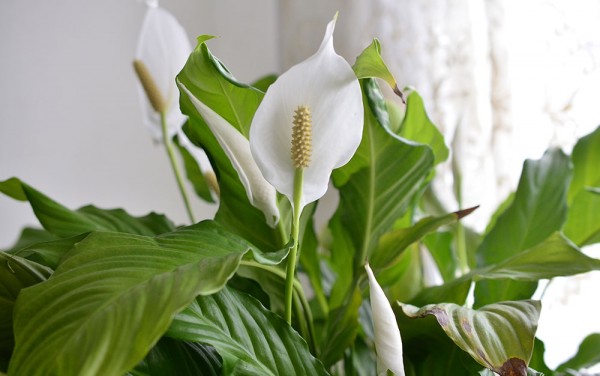Did You Know That Some House Plants Can Help To Prevent Mold?

We have written before on how different types of houseplants can improve the quality of your indoor air.
In a similar way, there are also houseplants that can help prevent mold.
But first a few words on how mold is caused
It is the presence of high levels of humidity and heat that can combine to result in mold, often more likely occurring in the bathroom or kitchen.
To reduce the likelihood of mold forming, it’s important to ensure the space is well ventilated by opening windows and doors to allow air movement, especially after baths or showers.
In addition, if you have a ventilation fan in your bathroom, remember to turn this on whenever the room is being used.
In spite of these precautions, it is wise to keep an eye out for mold as it can often creep into spaces that you may miss. Behind toilets or sinks are just such common spaces where mold is found.
Those houseplants that can help prevent mold
Using houseplants in rooms prone to mold is a natural way of controlling humidity levels because the plants will absorb moisture through their leaves. A double benefit with attractive greenery to look at plus reducing the risk of mold.
So, which houseplants will help to prevent mold?
1. Hedera Helix - or English Ivy
Easy to grow and very easy on the eye with the trailing foliage of this evergreen whether positioned in a hanging basket where the leaves cascade out over the basket or in a regular pot. The ivy will grow happily with plenty of bright, indirect light in a moist but well-drained soil. Water regularly, checking the top inch of soil and wait until it is dry before watering again.
English ivy prefers medium to high humidity so it will happily grow in a bathroom or kitchen.

In addition, Hedera helix is one of the top houseplants for purifying air by filtering out toxic chemicals, reducing levels of formaldehyde, benzene and trichloroethylene.
English Ivy improves the quality of the air that you breathe as you sleep. It eliminates toxins in that air while adding healthy, life giving oxygen.
2. Dracaena Trifasciata - or Snake Plant
The Snake Plant is as tough as old boots and difficult to kill off, making it a great houseplant for those who find looking after houseplants challenging! They do prefer a sunny position and don't mind too much whether they are placed in humid or dry rooms.
In addition to helping prevent mold in the home, they may also help reduce the damaging health effects of trichloroethylene. This is a chemical compound found in cleaning products that cause headaches, dizziness and nausea.
The Snake Plant releases more oxygen at night than it does during the day, helping to improve the bedroom's air quality while easing breathing.

3. Spathiphyllum - or Peace Lilly
Everyone seems to love these plants with their glossy leaves and pretty white flowers. As well as being so attractive, they are perfect for warm, humid environments. They like to be watered when the top of the soil dries out while their love of humid spaces makes them great for placing in areas prone to mold.
That glossy foliage works too to extract high levels of benzene, formaldehyde, trichloroethylene and ammonia from the atmosphere, repaying you with the gift of oxygen instead.

4. Palms - different varieties
There is plenty of choice when it comes to palms with Dypsis lutescens (areca palm), Phoenix robelenii (dwarf date palm), Rhapis exelsa (broadleaf lady palm) and Chamaedorea elegans (parlor palm). They are great for controlling humidity levels and as mold preventatives, again by absorbing the excess moisture into their leaves.
Studies into air purification showed that palms help to rid formaldehyde and xylene from the atmosphere, making them a great addition to the home.
Palms come in all shapes and sizes so there will be a variety suitable for every home.

This link will take you to our image gallery, showing images of the various symptoms that can be treated with our specific Healing Natural Oils products.
And this link will take you to our health articles covering all the conditions for which we have products.
SOURCES:
Addressing the prevalence of respiratory allergy in the home environment - ScienceDirect



